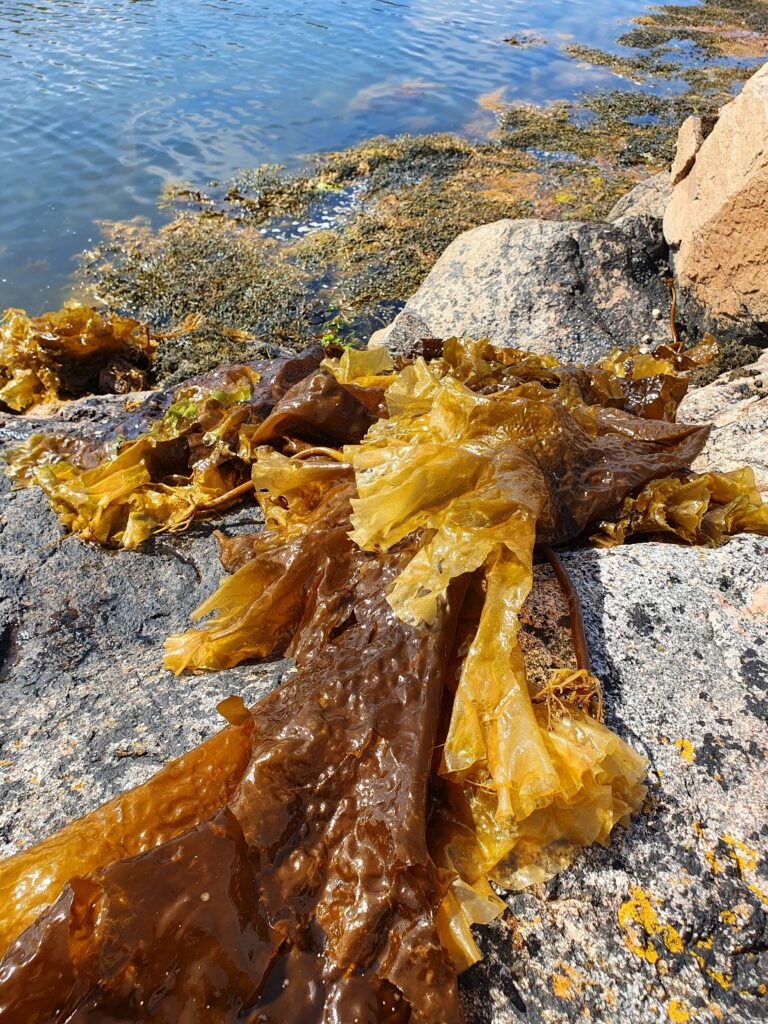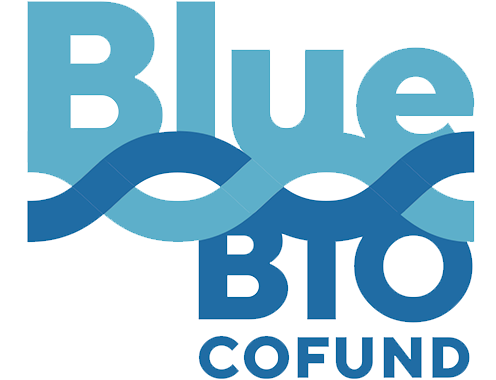Reforms in regulation are needed to enable the blue bioeconomy, argues Ingeborg Korme.
The blue bioeconomy is an essential factor in our sustainable future, but we are still just scratching the surface of what is possible in the aquatic domain. It is widely recognised that to achieve a fully circular
aquaculture and blue bioeconomy, we need to both valorise waste and sidestreams, and incorporate novel ingredients. But there is an urgent need for policy reform to enable this green transition. With the development of integrated value webs that use interconnected rather than linear processes, the economy will be circular, sustainable and secure, with more regional jobs. But with more complex value chains, the regulatory landscape also becomes more complex.
Public policies can create niches to assist the emergence and spread of radical innovation, but they can also limit the uptake of innovation. To enable investments in the blue bioeconomy and de-risk business opportunities, there must be consistency and predictability in regulation between and within European countries.
In its 2022 report, the European Environmental Agency states that the existing EU policy mix in the food sector has gaps and inconsistencies that limit the potential to achieve transformative change. In the EU-27 countries, 85% of blue economy investors were based in Europe (source: BlueInvest investor report, An Ocean of Opportunities), indicating that policy reform in Europe will be impactful. And even though only 16% of total investment deals in the blue economy were in aquaculture and fisheries, there is large potential for growth.
With the development of the EU taxonomy for sustainable activities – the classification system that defines criteria for economic activities that are aligned with a net zero trajectory by 2050 and broader environmental goals – there is a growing pressure for industry to make their processes circular and sustainable. To enable the Green Deal, circularity must be financially and environmentally sustainable but most of all, it must be legal. To valorise waste and sidestreams, and utilise novel ingredients, regulatory reform is needed. At this stage, a bouquet of regulations on anything from fertiliser to animal feed limit the potential of a truly circular economy.
The blue bioeconomy
Funded by EU Horizon 2020, ERA-Net Cofund Blue Bioeconomy (BlueBio) has, for the past five years, been working to identify new and improve existing ways of creating value from the blue bioeconomy.
The partnership consists of a range of ministries and funding agencies in Europe, and has issued calls to underpin the development of new and existing value chains through the funding of 49 projects for €43m (£37m). Many of these projects are showing promising results in creating high-value products from marine resources such as fish trimmings, algae extraction or rearing of species that we have no tradition for in Europe.
Circularity must be financially and environmentally sustainable but most of all it must be legal.
Three topics are of particular interest for aquaculture: algae, the valorisation of sidestreams and the use of sludge. Micro algae and macro algae (seaweed etc) are aquatic. They have a wide range of physical properties that have been shown to be a sustainable replacement for petroleum, concrete, soy and traditional textiles, as well as algae-based nutrients and supplements. The sheer efficiency of solar-to-chemical energy conversion in algal photosynthesis is two to five times that of traditional crops. Integrated multitrophic aquaculture (IMTA), with Saccharina japonica and scallop farming in China, reduced water pollutants and had 67% higher economic benefits than scallop monoculture.
In BlueBio, projects have among many things identified algal extracts for food fibres and anti-oxidant activities (MINERVA, Coordinator: Dagmar Stengel, National University of Ireland in Galway) and high-purity polysaccharide fractions that create bioplastic films and biopackaging (PlastiSea, Project Coordinator: Øystein Arlov, SINTEF AS).
A major barrier to algae aquaculture is that the regulations for algae are inconsistent within and across national borders. Regulations are the largest barrier to European algae production, especially the Novel Foods Regulation. In the EU, algae are “plants” with respect to trade tariffs but “aquaculture species” with respect to production.

As long as algal cultivation falls within the remit of aquaculture legislation, it will be managed by the member states and not the EU. At EU level, guidelines are needed for member states to simplify the route for novel algae applications and mainstream the work that happens on a national level. The European Commission should identify 20 to 30 species of algae to put on an approved list, state the conditions to reach that status and the correct toxicological quality to start the mainstreaming.
Algae could also be used for carbon sequestration, but there is no global standard for measuring and certifying carbon sequestration in fisheries and oceans. Climate mitigation credits could boost investments, as has been seen in biofuels.
The financial assistance to farmers for animal production hinders the food system transition we need, creating a lock-in and distorting the market for novel foods and ingredients. Integration of microalgae production, with industries and systems producing nutrients as outflows (animal farming, food processing, sewage treatment etc) could make enormous contributions to circularity and carbon capture. It will create new business opportunities and jobs in local communities but algae need to be included in the EU Aquaculture Assistance Mechanism to create a level playing field.
As long as the route from innovation to market application is messy, confusing and unintuitive, there will be no significant private investment and few new solutions will leave the pilot stage. The challenges facing the European seaweed industry are not technology driven but related to governance and market issues.
From waste to resource
A lot of resources are today lost as waste, such as by-catch and sidestreams from fisheries, aquaculture and food processing. These resources can replace leather, plastic, coatings etc but they are currently expensive or illegal.
For industry to use such novel materials and ingredients, the biomass must be reliable and available, and there must be market acceptance. The definition of “waste” through the value chains must be optimised with circularity in mind. There must be a balance between potential health risk and sustainability. New protocols are needed to enable true circularity, from fisheries management and landing regulations to food processing regulations and food packaging.
Photobioreactors, marine biorefineries and marine enzymes all promise to help develop this sector. Biorefinery approaches, for example, can valorise rest raw materials (typically heads, viscera, trimmings, bones and cartilage, hide, tails and so on). Carbon or sustainability taxes, or inclusion in the EU taxonomy, would help businesses to invest in these processes.
Over the last five years, BlueBio has supported projects valorising aquaculture waste. AquaHeal3D (Project Coordinator: Karin Gilljam, Regenics) is working with unfertilised salmon roe as a wound-healing accelerant for complex wounds.
BlueCC (Project Coordinator: Runar Solstad, Nofima) is extracting collagen from species such as lumpfish for alternative uses and has reduced the extraction time from six hours to five minutes.
Caseawa (Project Coordinator: Giuseppe Falini, Università di Bologna) is extracting calcium carbonate from oyster shells, which is better than from standard production.
InEVal (Project Coordinator: Matthew Slater, Alfred Wegener Institute) is exploring using sea stars and other echinoderms in feed.
For a truly circular economy, waste must be allowed as an ingredient in new processes and products. Investment in the valorisation of waste will only take place if, when a process is proven to be safe, there is an understanding that regulations will change.

Redefining sludge
Sludge, the semi-solid slurry output of a range of industrial processes including wastewater treatment and aquaculture, is the epitome of waste. The nutrient-rich resource, which is typically incinerated, can be used for anything from heating to fertiliser to growth substrate for novel feed resources.
But to do this, the waste must be redefined so it can be used as inputs and the corresponding regulations must be adjusted. For instance, aquaculture sludge is not included in the EU regulation on fertiliser, as the European Food Safety Authority did not have enough data in 2015 to include it. Seven years on, the world looks different.
Since 2017, sludge from land-based aquaculture has had to be processed but with limited opportunity for use. There is a growing body of research on the safety of the processes. A mapping of available data on sludge to include it in regulation for fertiliser and for growth substrate for low-trophic feed ingredients (insects, gammarids, polychaetes) will be published in 2024.
There is an increased need for biomass management. With a change in regulation, this resource can be valorised and a circular business can bloom. In an Italian municipal sewage plant, they found that 8.5m (£7.3m) and 85 jobs can be created for every 100,000 tonnes of sewage sludge turned into fertiliser (Tassinari et al 2021). Similar opportunities can be expected in aquaculture.
An example of sludge reuse for an alternative feed resource is Andreas Hagemann’s project on the use of polychaetes, Sidestream. Sludge is an excellent substrate for low-trophic animals but 75% of the astaxanthin from production was lost when the product was cleaned under current protocols for food safety and GMO, when using it as feed for production animals.
Reducing the carbon footprint
For a truly circular economy, waste must be allowed as an ingredient in new processes and products
One of the biggest emitters of global CO2 is food production. There is an urgent need to improve our food system and futureproof it for environmental and security reasons. By diversifying the feed and food sources, we will solve many of our biggest challenges in one go.
The findings from the 49 BlueBio projects show that aquatic resources have the potential to be part of a sustainable European future, if we do it right. However, we need both further research and innovation in these areas to ensure viable solutions, and regulatory reform to enable the adoption of the innovation. In the blue bioeconomy, there are innumerable possibilities for innovation and development. These opportunities are not limited to technological innovation in, for example, fisheries and aquaculture or monitoring and observation, but extend to engaging with society (and in particular coastal communities) to implement sustainable value chains fully. There is no blue bioeconomy without a social licence.
We need sustainable value chains that are quickly integrated in production systems, distribution channels and market segments that deliver products acceptable to consumers. This must be enabled by the policy landscape, accelerating and upscaling radical innovations and favourable taxation schemes for sustainable products.
There is also a need to transform ocean governance. Policy needs and considerations must be better integrated into project design, implementation and solution finding and testing. Then the feedback loop for policy transformation will be clearer too. Policy coordination must go hand in hand with transforming/ reskilling the workforce. Despite the challenges, the future of the blue bioeconomy is bright, with many opportunities for new value chains, both at local and global levels.
Though the Blue Bioeconomy Cofund collaboration will end in 2024, many of the funding partners will continue to be engaged in collaborative efforts, for example in the Sustainable Blue Economy Partnership and the EU Mission to “restore our ocean and waters by 2030”. BlueBio is planning an event in the European Parliament in early 2024 on the need for regulatory reform to enable circularity and the blue bioeconomy. We will be touching on topics such as algae, sludge, waste and sidestream regulation from the blue bioeconomy. More details will be available in due course.
Ingeborg Korme is Coordinator of ERA-Net Cofund Blue Bioeconomy. Further information on BlueBio and the outputs of the ERA-Net can be found at bluebioeconomy.eu or by emailing
bluebio@bluebio.eu
This article was published in the October 2023 issue of the Fish Farmer Magazine. The article can be found here.

